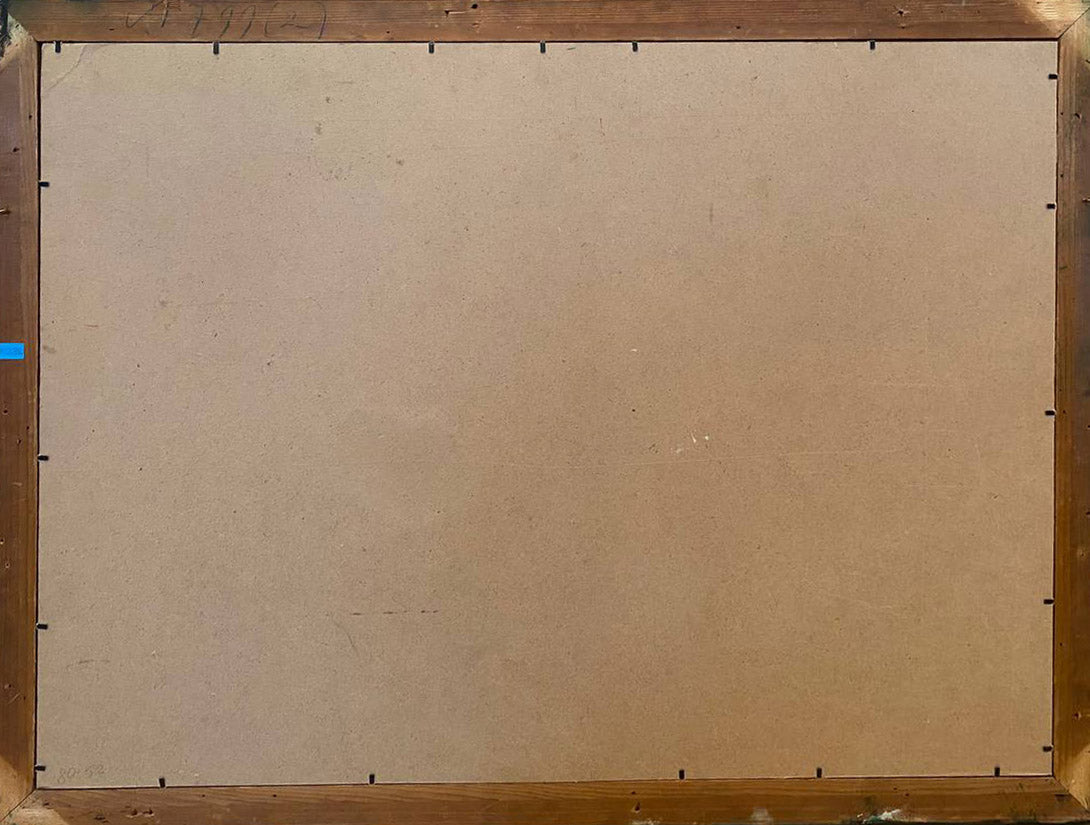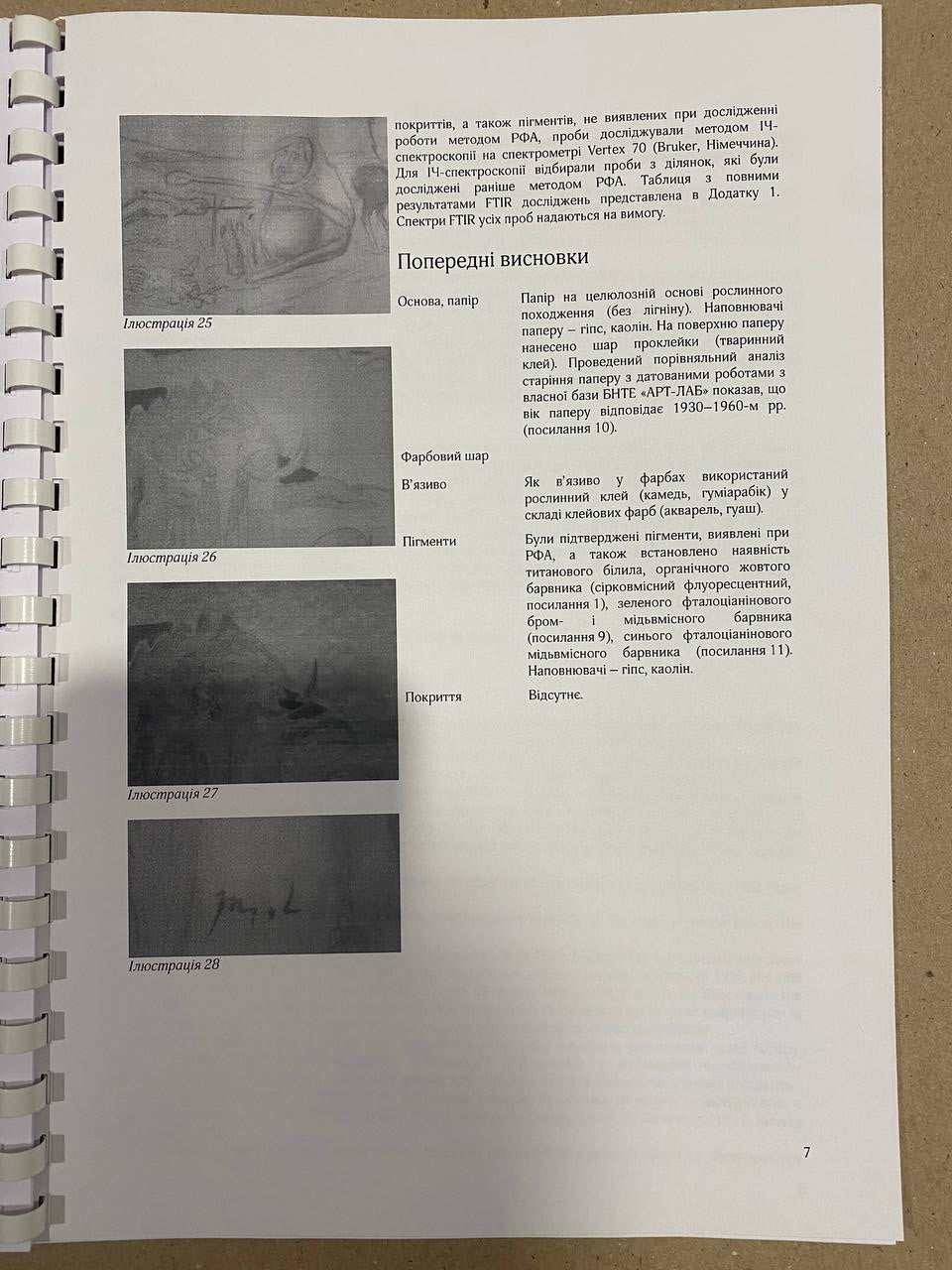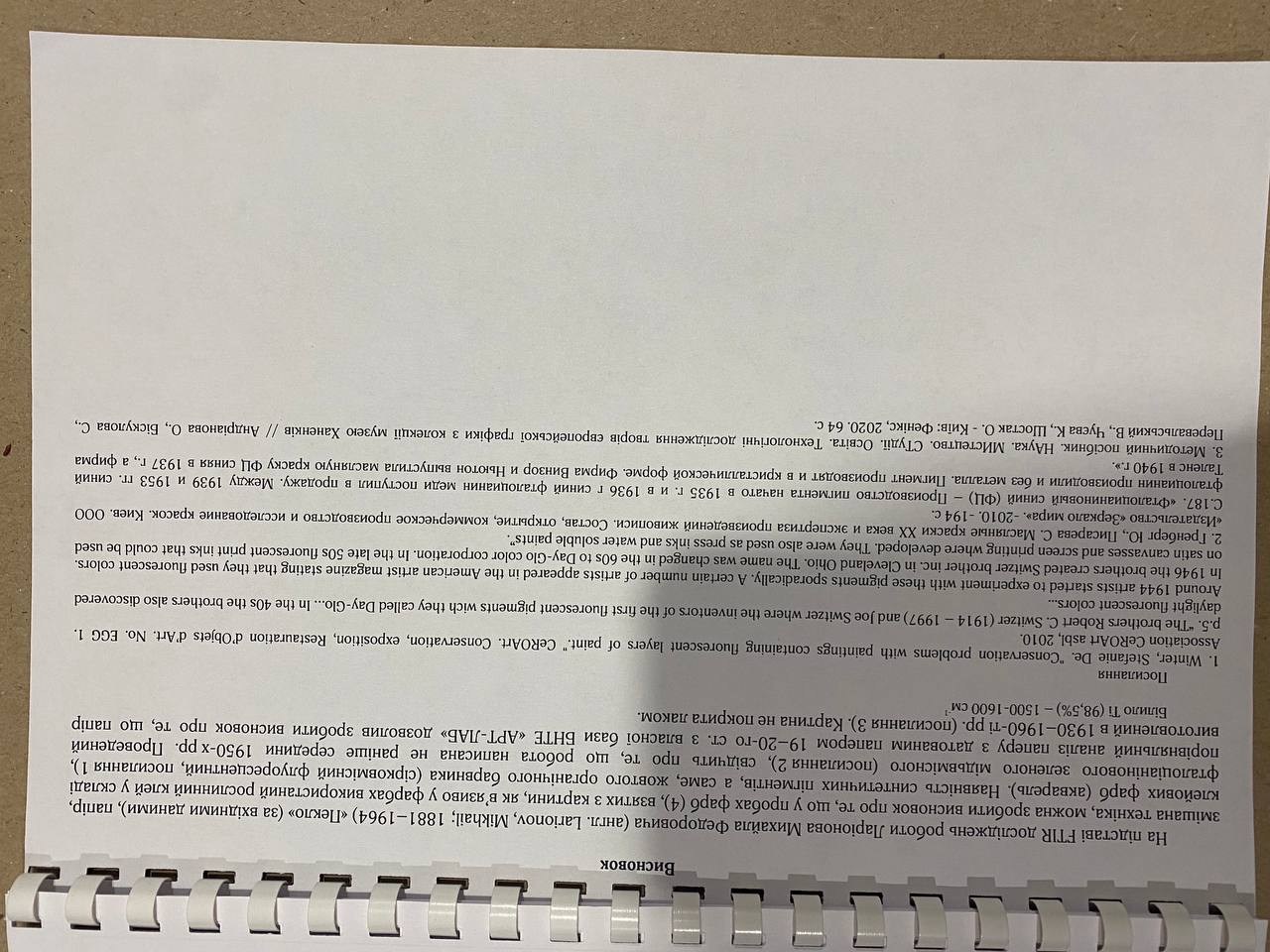1
/
of
35
Abstract painting Hell Mikhail Fyodorovich Larionov
Abstract painting Hell Mikhail Fyodorovich Larionov
SKU:Verns1289
Regular price
$75,000.00 USD
Regular price
Sale price
$75,000.00 USD
Taxes included.
№Verns 1289
*** ABOUT THIS PAINTING ***
* TITLE: "Hell"
* ARTISTS: Mikhail Fyodorovich Larionov
* SIZE: 60x86 cm/'23.62x33.85 inches'
* MEDIUM: mixed media, paper
* HAND PAINTED: Original painting from our collection
* CONDITION: we tried to convey the maximum information with the help of photos about this product
About the artist: He was born in the Kherson province, in the county town of Tiraspol. The son of a military paramedic, he spent his childhood in the south of Russia in Tiraspol, where he often returned for summer sketches.
In 1891, the Larionovs came to Moscow, and Mikhail entered the Voskresensky Real School.
From 1898 to 1910 he studied at the Moscow School of Painting, Sculpture and Architecture with Valentin Serov, Isaac Levitan, and Korovin Konstantin. [9] There he met Natalia Goncharova, who became not only his life partner (officially the marriage was registered only in 1955), but also a like-minded person in his work.
From the early 1900s, Larionov actively participated in artistic life, exhibiting not only in Russia but also in Europe. Larionov was greatly influenced by French painters, whose works he first became acquainted with in Sergei Schukin's Moscow collection.
From 1902 to 1906 he worked in the style of late Impressionism ("Lilac bush in bloom"). [7]
In 1906, at the invitation of Sergei Diaghilev, he participated in the Russian section of the Paris Autumn Salon.
In 1907, experiencing the influence of Fauvism and naive art, he turned to the primitivist style, creating memorable paintings of juicy color, sharp lines and sharp scenes ("Resting Soldier", "Spring").
By 1912, he created a new artistic concept - Luchism [7], one of the first examples of abstract art in the category of so-called "objectless creativity", where forms were formed by the intersection of rays reflected from various objects.
In 1914, after the outbreak of World War I, he was called up for military service. After being commissioned for his wounds, Larionov settled in Paris, where in 1915-1929 he worked with Goncharova for Diaghilev, creating costumes and scenery for the productions of his "Russian Ballets." In painting, he returned to the early, figurative, manner, chamber genre and still life. Due to the outbreak of the October Revolution, he never returned to Russia.
In 1955 he officially registered his marriage to Natalia Goncharova. After her death in 1962, he married AK Tomilina, who became the official heiress of both artists.
He died in the Paris suburb of Fontenay-au-Rose in 1964. He was buried in the cemetery in Ivry-sur-Seine. There is a street in Tiraspol named after the artist.
*** ABOUT THIS PAINTING ***
* TITLE: "Hell"
* ARTISTS: Mikhail Fyodorovich Larionov
* SIZE: 60x86 cm/'23.62x33.85 inches'
* MEDIUM: mixed media, paper
* HAND PAINTED: Original painting from our collection
* CONDITION: we tried to convey the maximum information with the help of photos about this product
About the artist: He was born in the Kherson province, in the county town of Tiraspol. The son of a military paramedic, he spent his childhood in the south of Russia in Tiraspol, where he often returned for summer sketches.
In 1891, the Larionovs came to Moscow, and Mikhail entered the Voskresensky Real School.
From 1898 to 1910 he studied at the Moscow School of Painting, Sculpture and Architecture with Valentin Serov, Isaac Levitan, and Korovin Konstantin. [9] There he met Natalia Goncharova, who became not only his life partner (officially the marriage was registered only in 1955), but also a like-minded person in his work.
From the early 1900s, Larionov actively participated in artistic life, exhibiting not only in Russia but also in Europe. Larionov was greatly influenced by French painters, whose works he first became acquainted with in Sergei Schukin's Moscow collection.
From 1902 to 1906 he worked in the style of late Impressionism ("Lilac bush in bloom"). [7]
In 1906, at the invitation of Sergei Diaghilev, he participated in the Russian section of the Paris Autumn Salon.
In 1907, experiencing the influence of Fauvism and naive art, he turned to the primitivist style, creating memorable paintings of juicy color, sharp lines and sharp scenes ("Resting Soldier", "Spring").
By 1912, he created a new artistic concept - Luchism [7], one of the first examples of abstract art in the category of so-called "objectless creativity", where forms were formed by the intersection of rays reflected from various objects.
In 1914, after the outbreak of World War I, he was called up for military service. After being commissioned for his wounds, Larionov settled in Paris, where in 1915-1929 he worked with Goncharova for Diaghilev, creating costumes and scenery for the productions of his "Russian Ballets." In painting, he returned to the early, figurative, manner, chamber genre and still life. Due to the outbreak of the October Revolution, he never returned to Russia.
In 1955 he officially registered his marriage to Natalia Goncharova. After her death in 1962, he married AK Tomilina, who became the official heiress of both artists.
He died in the Paris suburb of Fontenay-au-Rose in 1964. He was buried in the cemetery in Ivry-sur-Seine. There is a street in Tiraspol named after the artist.
Couldn't load pickup availability






































































